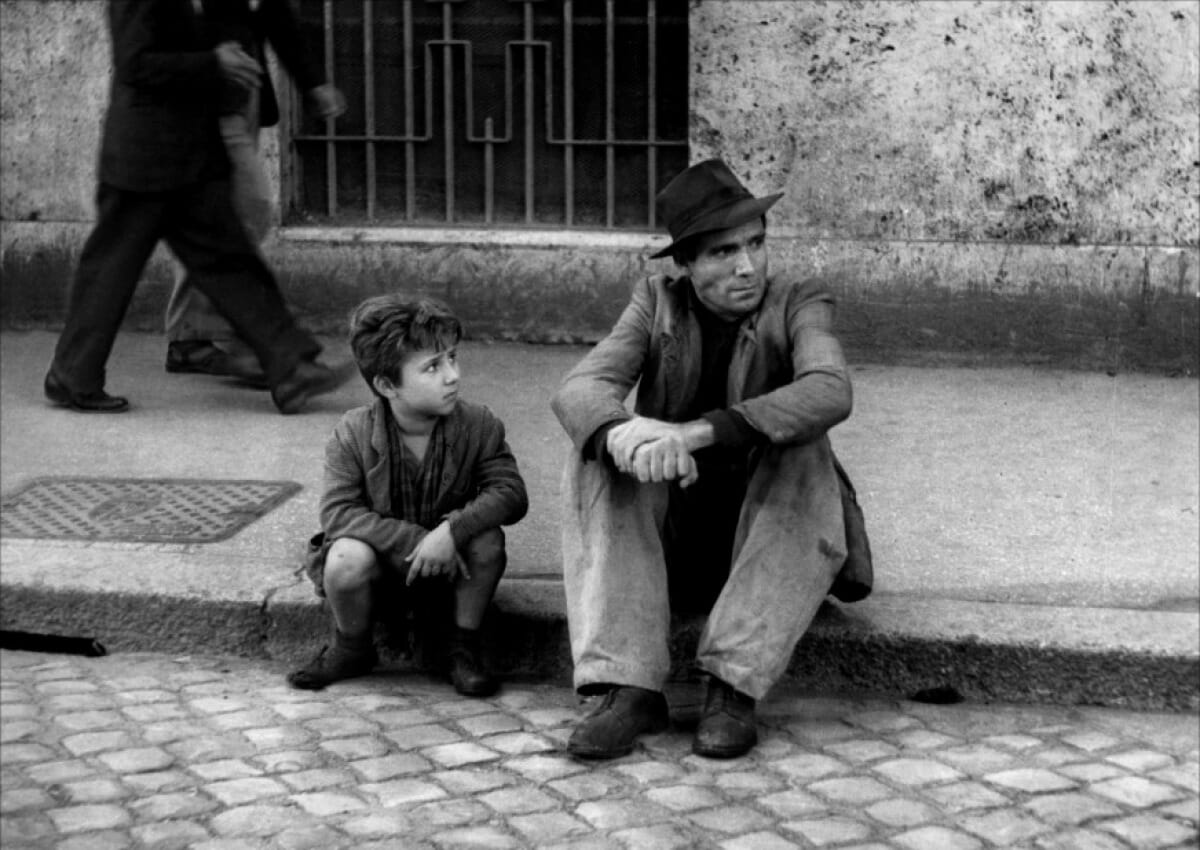
Marriage Italian Style (1964) Review | A 60s Italian Movie in which a Woman Fights for for Dignity in Post-war Naples
Year
Runtime
Director
Cinematographer
Production Designer
Music by
Format
Genre
Subgenre
In 1964, Italian director and actor Vittorio De Sica brought Marriage Italian Style (Matrimonio all’italiana) to the big screen. Adapted from Eduardo De Filippo‘s play Filumena Marturano, this film expertly blends comedy and drama. The narrative revolves around a turbulent love-hate relationship between a former prostitute, portrayed by the legendary Sophia Loren, and an unrepentant womanizer, played by the iconic Marcello Mastroianni. This passionate pairing, one of the most praised on-screen duos in the Golden Age of Hollywood and the history of Italian cinema, delivers a compelling and nuanced account that acts as a poignant reflection of post-World War II Italian society.
Marriage Italian Style delves into women’s social status, offering a rich commentary on their evolving roles and challenges during that era. The movie also examines the crisis of the patriarchal bourgeois family and explores the protagonist’s quest for social redemption for herself and her children. Ultimately, it is a vivid journey of perseverance and resilience that has garnered critical and audience acclaim.
- Will-They-Won’t-They?
- A Tenacious Woman Fighting the Patriarchy
- De Filippo vs. De Sica
- Commedia all’italiana
- The Golden “Couple” of Italian Cinema
Will-They-Won’t-They?
Naples, 1950s. Filumena Marturano (Sophia Loren), a former prostitute, plans to marry her longtime lover, the wealthy Domenico Soriano (Marcello Mastroianni). When she discovers that Domenico intends to marry a young cashier, Filumena feigns illness and convinces him to marry her as her “dying wish.”
The ruse works, and they are married. Immediately after the ceremony, however, Filumena reveals the truth, provoking Domenico’s fury. He demands an annulment, but she explains that she was motivated by a desire to secure a dignified future for her three children, whose existence Domenico was unaware of. These revelations force Domenico to reevaluate his relationship with Filumena.
A Tenacious Woman Fighting the Patriarchy
Filumena is a proud woman who seeks to have her new social status, acquired through marriage, recognized with dignity. Above all, she wants to ensure a decent future for her three children, whom she has supported financially from afar. Now that they are grown up, she wants to bring them together and form a real family with Domenico. In many ways, Filumena stands out as a feminist character ahead of her time. She fights fiercely to get what she wants in a world that often disregards women’s feelings. When Domenico threatens to cast her aside, Filumena rebels with decisive action. She tricks him into marrying her, thus securing her status as his legally recognized wife. Although she was born and raised in a male-dominated society, she dared to claim her role as a mother and question the illegitimacy of children born out of wedlock.
In contrast, the male protagonist, Domenico Soriano, comes from a wealthy bourgeois family and has never known poverty. A relentless Casanova, he often treats Filumena in a shabby manner. Despite the evolution of their relationship over the years, Domenico has never considered marriage, seeing it as a bridge too far due to their different social classes and Filumena’s past as a prostitute. Preoccupied with social judgment and prejudice, he avoids making their relationship official. After many trials, Domenico begins to understand the values that matter in life.
De Filippo vs. De Sica
Marriage Italian Style is based on Eduardo De Filippo‘s 1946 theatrical comedy, Filumena Marturano. De Filippo, a seminal figure in twentieth-century Italian theater, was a prominent actor, director, and playwright. He wrote numerous plays that were acclaimed and performed internationally. Among his most famous plays is Filumena Marturano, a three-act commentary on bourgeois family life and its patriarchal values. Initially written for his sister, Titina De Filippo, who played the title role, the play vividly outlines a proud, stubborn, resourceful, and passionate female character – traits that became hallmarks of De Filippo’s theater. He also directed a film version of the play in 1951, starring himself and his sister.
There are notable differences between De Filippo’s original play and De Sica’s adaptation. Unlike the play, which unfolds linearly, De Sica’s film begins in the middle of the action with the third act. It then digresses to recount the preceding events. While De Filippo’s play has a darker, more pessimistic atmosphere, De Sica adopts a lighter, comedic tone reminiscent of Billy Wilder‘s style in Irma la Douce (1963). In this way, De Sica approached the comic register and comedy, giving his adaptation a more upbeat and witty perspective.
Commedia all’italiana
Marriage Italian Style is a prime example of commedia all’italiana (Italian-style comedy), a famous film genre that combines humor, comedy, drama, and social satire. It emerged as an evolution of Italian Neorealism and reached its zenith in the 1960s. It retains key elements of Neorealism, such as realism, casting popular actors, and using regional dialects. It should be noted, however, that in Neorealism, the use of regional dialects reproduces the people’s language. In the Commedia all’italiana, however, dialect takes on a different meaning. The cinema of the 50s staged the vices and virtues of the average Italian, who moved into a society characterized by corruption, conformism, and careerism. The dialects serve mainly to reinforce the stereotypes of certain comic characters.
Like Neorealism, commedia all’italiana centers on characters from humble backgrounds who recount the everyday events of their tragic social conditions. However, it presents all of this in a lighter, more entertaining manner, catering to an audience seeking an escape from reality. One of the achievements of De Sica’s film is its role in bringing this genre from Italy to international acclaim.
A film directed by Pietro Germi, Divorce Italian Style (1961), contributed significantly to the rise of this cinematic genre and to which De Sica explicitly refers. Germi’s black comedy offers a sharp, satirical look at the mentality and social mores of southern Italian society. De Sica’s Marriage Italian Style mirrored the commercial success and critical praise of Germi’s work. The film won numerous awards and was nominated for two Academy Awards: Best Actress in a Leading Role and Best Foreign Language Film.
The Golden “Couple” of Italian Cinema
Sophia Loren and Marcello Mastroianni are icons of Italian cinema, embodying the very essence of the seventh art. Their unique chemistry earned them worldwide honors and transformed them from mere co-stars into lifelong friends who deeply respected and admired each other. Their collaboration spanned over two decades, showcasing their versatility from comedic to dramatic roles. Through their films, the two have represented the face of the ever-changing Italian society abroad.
In Marriage Italian Style, the chemistry between the two actors entertains and deeply moves the viewers, drawing them into an irresistible story that makes them reflect on the fundamental values of life. The film marks a milestone in the history of cinema. It combines sentimentality with occasional drama, anticipating and exploring crucial themes such as the social status of women. It’s a movie that continues to thrill, entertain, and inspire filmgoers worldwide.
Tag
Buy a ☕ for Hypercritic










